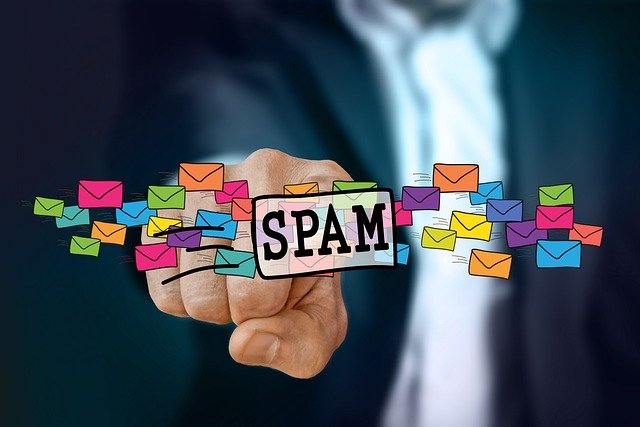
What is Spam: How to Identify and Stop Spam
Spam stands as an omnipresent nuisance, insidiously infiltrating our inboxes, disrupting our online experiences, and posing significant security risks. Its pervasive presence not only detracts from the quality of our digital interactions but also threatens the integrity of personal and organizational cybersecurity.
Thus, understanding the multifaceted nature of spam and mastering strategies to combat it are essential skills for individuals and businesses navigating the digital realm. In this comprehensive guide, we embark on an exploration of the complexities of spam, unraveling its various forms and intricacies.
By looking into its anatomy and dissecting its tactics, we equip readers with the knowledge and tools necessary to identify, mitigate, and ultimately prevent the onslaught of spam.
Whether you're a casual internet user seeking to safeguard your inbox or a seasoned professional tasked with protecting your organization's digital infrastructure, this guide serves as a valuable resource in the ongoing battle against spam.
Defining Spam
At its core, spam refers to unsolicited or unwanted messages sent indiscriminately, typically in bulk. These messages can take various forms, including emails, text messages, social media posts, and comments.
Spam often promotes dubious products, services, or fraudulent schemes, aiming to deceive recipients or extract sensitive information. In essence, spam floods digital channels with content that users did not request, disrupting their online experience and potentially exposing them to security risks.
Whether it's unwanted advertisements, phishing attempts, or deceptive offers, spam undermines trust, wastes time, and poses significant challenges for individuals and businesses alike.
Understanding the nature of spam is essential for implementing effective countermeasures to protect against its pervasive influence in the digital world.

Types of Spam
#1. Email Spam: This ubiquitous form of spam inundates email inboxes with a barrage of unsolicited messages. From unwanted advertisements to deceptive phishing attempts and nefarious malware-laden attachments, email spam poses a significant threat to users' privacy and security.
Often, these spam emails masquerade as legitimate communications from reputable organizations, enticing recipients to click on malicious links or divulge sensitive information.
#2. Social Media Spam: Social media platforms serve as fertile ground for various forms of spam, including fake accounts, automated bots, and sensationalized clickbait content.
These spam tactics aim to exploit users' trust and manipulate platform algorithms to artificially inflate engagement metrics.
Whether it's fake followers, fraudulent giveaways, or misleading news articles, social media spam undermines the integrity of online discourse and poses risks to users' digital well-being.
#3. Website Spam: Website spam capitalizes on vulnerabilities in online platforms to flood comment sections, forums, and guest books with irrelevant links, promotional content, and deceptive messages.
These spammy tactics not only degrade the quality of user-generated content but also undermine the credibility of websites and online communities.
Furthermore, website spam can harm search engine rankings and expose users to malicious links or phishing scams.
#4. Instant Messaging Spam: With the rise of messaging platforms like WhatsApp, Telegram, and SMS, spam has extended its reach to direct messaging channels.
Unsolicited messages containing advertisements, phishing links, or fraudulent offers can disrupt users' conversations and pose security risks.
Moreover, spam messages on messaging platforms often bypass traditional email filters, making them particularly challenging to detect and mitigate.
Ways of Identifying Spam
Recognizing spam amidst the deluge of digital communication requires vigilance and discernment. Common indicators of spam include:
#1. Suspicious Sender Addresses: Be wary of emails or messages from unfamiliar or suspicious sender addresses. Check for misspellings or variations of legitimate domain names, as these may indicate attempts to deceive recipients.
#2. Generic Greetings: Spam messages often use generic or impersonal greetings, such as "Dear User" or "Hello Customer," instead of addressing recipients by name. Lack of personalization can be a red flag for spam.
#3. Grammatical Errors: Pay attention to the language and grammar used in the message. Spam messages often contain grammatical errors, awkward phrasing, or unusual sentence structures indicative of automated or non-native language generation.
#4. Requests for Personal Information: Exercise caution when messages request personal information, such as passwords, account details, or financial credentials.
Legitimate organizations typically do not solicit sensitive information via unsolicited emails or messages.
#5. Urgent Calls to Action: Beware of messages that pressure you to take immediate action, such as clicking on links or downloading attachments. Urgency tactics are common in spam messages designed to exploit recipients' sense of urgency or fear.
#6. Hyperbolic Claims: Be skeptical of messages containing exaggerated claims or promises that seem too good to be true. Spam messages often use hyperbole or sensational language to attract attention and manipulate recipients.
#7. Unsolicited Attachments: Exercise caution when receiving unsolicited attachments, especially from unknown or untrusted sources. Malicious attachments can contain malware or viruses that compromise your device's security.
Consequences of Spam
#1. Identity Theft and Fraudulent Activities: Beyond being merely an annoyance, spam poses severe risks to individuals' and organizations' security. Phishing scams, often disseminated through spam messages, are a primary avenue for cybercriminals to perpetrate identity theft.
By posing as legitimate entities, these malicious actors trick unsuspecting recipients into revealing sensitive personal information, such as login credentials, financial data, or personal identification details. Subsequently, this stolen information can be exploited for various fraudulent activities, including unauthorized transactions, account takeovers, and even the creation of false identities, leading to substantial financial losses and reputational damage.
#2. Financial Losses and Fraudulent Transactions: Spam-related scams can have devastating financial consequences. Individuals and businesses may fall victim to deceptive offers, fraudulent schemes, or fake advertisements promoted through spam messages.
These scams often promise unrealistic rewards or incentives to lure victims into parting with their money or sensitive information.
Whether it's an investment scam, a fake lottery prize, or a fraudulent product purchase, the outcome is the same: unsuspecting victims suffer financial losses, sometimes amounting to substantial sums, as their funds are siphoned away by cybercriminals.
#3. Compromised Security and Data Breaches: Clicking on malicious links or downloading attachments from spam emails can lead to the compromise of personal and organizational security.
Spam messages frequently serve as vehicles for delivering malware, ransomware, and other malicious software designed to exploit vulnerabilities in users' devices or networks.
Once infected, compromised systems may become part of botnets, used to launch further cyber attacks, or have sensitive data exfiltrated by attackers. Such data breaches not only jeopardize the confidentiality, integrity, and availability of sensitive information but also incur significant costs in terms of remediation, regulatory fines, and reputational damage.
#4. Diminished Productivity and Operational Disruption: The sheer volume of spam inundating inboxes can significantly diminish productivity for individuals and organizations.
Employees spend valuable time sorting through unwanted emails, filtering out spam messages, and mitigating the impacts of spam-related incidents, diverting attention from core tasks and priorities.
Moreover, the disruption caused by spam-related security breaches or malware infections can result in operational downtime, disruption of business processes, and loss of revenue, further exacerbating the productivity drain caused by spam.
5. Erosion of Trust and Credibility: The pervasive presence of spam undermines trust in online platforms, email communications, and digital interactions.
Users become increasingly wary of engaging with unsolicited messages, clicking on unfamiliar links, or interacting with unknown senders, leading to a breakdown in trust between individuals, businesses, and online communities.
Moreover, the proliferation of spam erodes the credibility of legitimate businesses and organizations, as recipients struggle to differentiate between genuine communications and spammy solicitations, resulting in diminished brand reputation and customer trust.
#6. Degradation of Online Ecosystems and User Experience: The rampant spread of spam contributes to the degradation of online ecosystems, polluting digital environments with irrelevant, deceptive, and malicious content.
Users are inundated with a constant stream of unwanted messages, making it increasingly difficult to discern legitimate communications from spam. This erosion of quality and authenticity diminishes the overall user experience, undermines the credibility of online platforms, and hampers the growth and sustainability of digital communities.
Moreover, the prevalence of spam-driven clickbait content and sensationalized headlines contributes to the dissemination of misinformation and the spread of online scams, further eroding trust and perpetuating a cycle of digital deception and exploitation.
How to Combating Spam
Effectively combating spam requires a comprehensive approach that integrates technological solutions, user education, and proactive measures. Here are key strategies to help prevent and mitigate the impact of spam:
#1. Implement Robust Spam Filters: Utilize advanced spam filtering technologies to automatically detect and filter out unwanted emails.
Many email service providers offer built-in spam filters that can be customized to enhance their effectiveness. Regularly update these filters to adapt to evolving spam tactics.
#2. Use Antivirus Software and Firewalls: Install reputable antivirus software and maintain an active firewall to protect against malicious attachments and links often embedded in spam messages.
Ensure these tools are updated regularly to defend against the latest threats.
#3. Exercise Caution with Personal Information: Be mindful of where and how you share personal information online.
Avoid posting email addresses and phone numbers on public forums or social media platforms where they can be harvested by spammers.
#4. Educate Users on Spam Awareness: Conduct regular training sessions to educate users about the signs of spam and phishing attempts. Teach them to recognize suspicious emails, avoid clicking on unknown links, and report spam incidents promptly.
#5. Enable Multi-Factor Authentication (MFA): Implement multi-factor authentication for email accounts and other critical systems. This adds an extra layer of security, making it more difficult for spammers to gain unauthorized access even if they obtain login credentials.
#6. Regularly Monitor and Update Security Settings: Periodically review and update security settings on email accounts, social media profiles, and other online platforms. Adjust privacy settings to limit exposure to spam and potential threats.
#7. Use Disposable Email Addresses: For online registrations or subscriptions that may result in spam, use disposable or secondary email addresses. This helps keep your primary email address free from unsolicited messages.
#8. Avoid Interacting with Suspicious Content: Refrain from opening emails, clicking on links, or downloading attachments from unknown or untrusted sources. Engaging with spam content can validate your email address to spammers and increase the likelihood of receiving more spam.
#9. Report Spam: Utilize the "Report Spam" or "Mark as Junk" features provided by email services to help improve spam filters. Reporting spam messages can also contribute to broader efforts to identify and combat spammers.
#10. Regular Backups: Regularly backup important data to protect against loss in case of a spam-related attack, such as ransomware. Ensure backups are stored securely and are not connected to the network to avoid being compromised during an attack.
Additional Proactive Measures
- Subscribe to Security Alerts: Stay informed about the latest spam and phishing trends by subscribing to security alerts from reputable cybersecurity organizations.
- Engage with Trusted Sources: Only download software, plugins, and other digital content from trusted and verified sources to reduce the risk of malware.
- Regular Audits: Conduct regular security audits to identify vulnerabilities in your digital infrastructure and address them promptly.
Best Practices
Adhering to best practices is paramount in the fight against spam. Regularly updating software and security protocols fortifies digital defenses against evolving threats.
Furthermore, practicing discretion when disclosing email addresses and exercising skepticism towards unsolicited communications can thwart spammer's attempts to exploit vulnerabilities.
Conclusion
Spam remains a persistent adversary, requiring continuous vigilance and adaptation. By understanding the nature of spam, recognizing its manifestations, and implementing proactive measures, individuals and organizations can mitigate its impact and safeguard their online experiences.
Together, let us strive towards a spam-free future, where the integrity of digital communication is preserved, and trust is upheld.